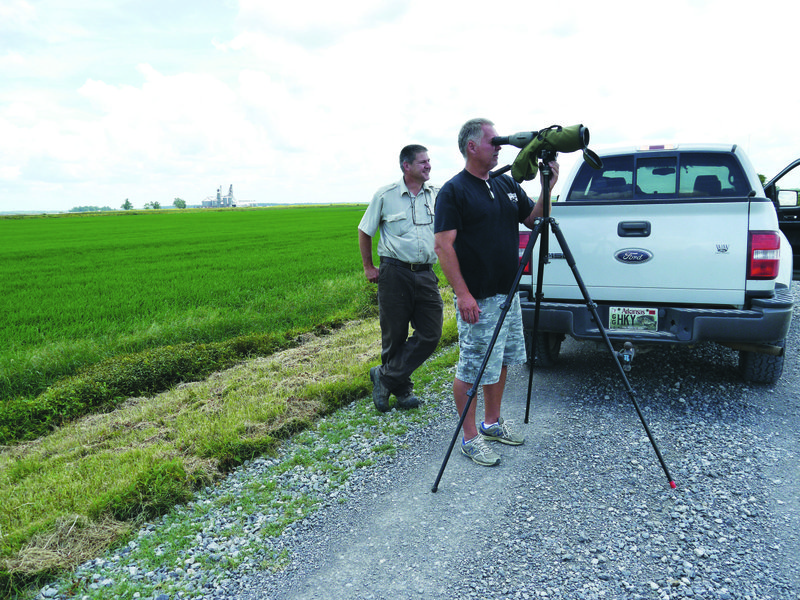Central Arkansans don’t need to go much farther than their backyard bird feeders to see some of the region’s most beautiful shorebirds.
The Bald Knob National Wildlife Refuge, known to outdoor enthusiasts for hunting and fishing, is a prime location for “birdies” to catch a glimpse of migratory shorebirds that temporarily call the area home.
“It’s the best place in the state as far as birds go,” said Kenny Nichols, the refuge’s resident bird expert. Nichols and his wife became interested in bird-watching as a hobby and discovered it was a way for them to reconnect with family in California who were avid bird-watchers.
“I got feeders for the yard and figured out what the birds were,” he said. “When I would spot a new one,
I’d call them, and we’d get excited about it. It was something we could have in common.”
After he had identified just about all the birds that frequented his yard, Nichols said, he decided to branch out and explore other bird habitats. That endeavor has led him as far away as the rain forests of Costa Rica, where an estimated 2,000 species of birds reside.
“He has the reputation as one of the most respected sources for birding in the state,” said Bill Alexander, who has been the manager at the refuge since its inception.
Nichols surveys the shorebirds at the refuge an average of three to five times a week during July, August and September. He also regularly takes to the Web to inform fellow birders when he sees an interesting species. He said that the Bald Knob National Wildlife Refuge is an ideal spot for migratory shorebirds to rest and refuel because it has an abundance of water.
The area was developed as a rice farm and was passed from a local farmer to the John Hancock Life Insurance Co. before it eventually drew the attention of the U.S. Fish and Wildlife Service. The property was established as a refuge in 1993. The multiyear purchase agreement began with 4,000 acres and has increased over the years to its present 15,022-acre status.
The Bald Knob National Wildlife Refuge office is at 1439 Coal Chute Road.
The primary purpose of the refuge is to provide habitat for migratory waterfowl. However, the natural attraction of water and the managerial practices of creating “mudflats” by Alexander have made it a popular spot for a variety of shorebirds, so much so that it was recognized May 13, 2005, as an Important Bird Area by the Audubon Society.
“It’s a manager’s dream come true,” Alexander said of the refuge.
The intricate irrigation system that runs throughout the refuge for the rice makes it possible to control the water level. That allows him to lower the level to create the mudflats that are so appealing to migratory birds, especially shorebirds, for resting and feeding during their migration in late summer and early fall.
An estimated 25 to 30 species of birds make their temporary home in the refuge. Endangered species such as the least tern and piping plover have been recorded there. Other species, such as the roseate spoonbill and wood stokes, also have been spotted on the refuge. A group of white pelicans has recently taken up residence as well. During their first year, pelicans don’t breed, so they have no need to migrate back to their nesting grounds. They find a waterway and hang out there instead, and this particular flock has chosen the Bald Knob Refuge as its temporary home, Nichols said.
Bald eagles, who follow the waterfowl for feeding purposes, can also be seen at the refuge in large numbers, primarily during the winter months, Alexander said.
From Nov. 15 to March 1, a large portion of the refuge is closed to the public as a waterfowl sanctuary. After that time, though, the refuge is once again open for bird-watchers and anyone who wants to experience the great outdoors.
Whether visited for hunting, fishing, photography or bird-watching, the Bald Knob National Wildlife Refuge has an outdoor adventure waiting.
“We want everyone to come out and enjoy the refuge,” Alexander said.
